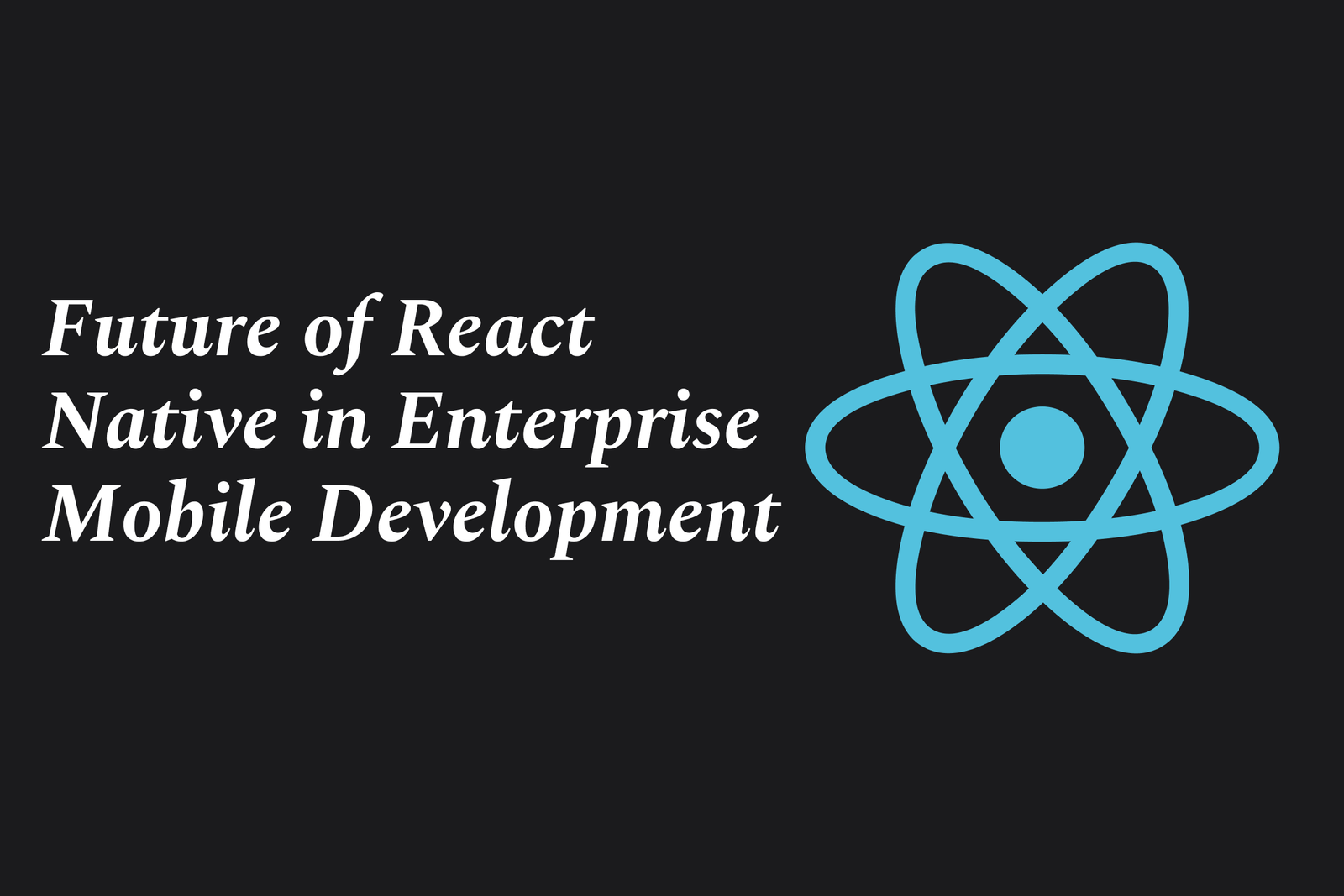Future of React Native in Enterprise Mobile Development
React Native’s future in enterprise mobile development is bright, driven by enhanced performance from its new architecture, strong cross-platform capabilities, and a growing ecosystem—making it an ideal choice for building efficient, scalable, and seamless apps across iOS, Android, web, and desktop.
Future of React Native in Enterprise Mobile Development
1 ) Introduction to React Native's Role in Mobile Development
React Native, launched in 2015 by Facebook (Meta), has become a prominent framework for building cross platform mobile applications using JavaScript and React. It allows developers to write a single codebase that runs on both iOS and Android, addressing the market’s demand for rapid and efficient cross platform development without compromising performance or user experience.
2 ) Current Status and Adoption in 2025
By 2025, React Native has substantially matured and is widely adopted by major enterprises such as Meta, Microsoft, Shopify, Tesla, and Discord. It boasts a large and active developer community with over 120,000 GitHub stars and thousands of contributors. Its ecosystem includes a rich array of plugins, libraries, and tools like Expo, React Navigation, and Reanimated. React Native’s support now extends beyond mobile devices to web, desktop, and multiple platforms through React Native Web and React Native for Windows/macOS.
3 ) Key Developments Shaping the Future
The future of React Native is driven by a significant internal revamp known as "The New Architecture," comprising:
Fabric: A cutting edge rendering system enabling better concurrency and modern UI updates that integrate smoothly with React 18’s concurrent features.
TurboModules: A system for making native modules more efficient and lazy loadable, significantly decreasing app startup times.
JavaScript Interface (JSI): Facilitates faster, more seamless communication between JavaScript and native code, eliminating the bottlenecks of the traditional bridge mechanism.
Together, these innovations enhance React Native’s performance, flexibility, and native interoperability, positioning it as a robust framework for enterprise grade applications.
4 ) Integration and Ecosystem Expansion
React Native is increasingly playing a central role in full stack JavaScript development. It integrates seamlessly with modern development tools such as Expo Router, backend as a service (BaaS) platforms, GraphQL, and monorepos, enabling enterprises to streamline development workflows. Its flexibility expands the scope from mobile only solutions to cross platform applications covering web and desktop environments, facilitating greater code reuse and unified developer experience.
5 ) Enterprise Benefits of React Native
Accelerated Development: Single codebase for multiple platforms reduces time to market.
Cost Efficiency: Lower development and maintenance costs due to shared code.
Strong Community and Support: Extensive resources and third party libraries aid implementation and troubleshooting.
Improved User Experience: With the new architecture, app performance and smooth native interactions improve markedly.
Future Proofing: Active development and adoption by large enterprises ensure ongoing improvements and ecosystem vitality.
6 ) Challenges and Considerations
While React Native has evolved, enterprises must consider:
Managing dependencies on community maintained libraries to avoid fragmentation.
Balancing the need for native modules versus JavaScript centric code to optimize performance.
Continuous learning curve due to new architecture changes and ecosystem growth.
7 ) Conclusion: React Native’s Strong Future in Enterprise Mobile Development
React Native stands at the forefront of modern mobile and cross platform development. Its ongoing architectural innovations, expansive ecosystem, and proven enterprise adoption underpin a strong and growing future. For enterprises looking for efficient, scalable, and performant cross platform solutions, React Native represents a highly viable and future proof development framework beyond 2025.
https://justacademy.in/news-detail/android-app-size-reduction-techniques
https://justacademy.in/news-detail/android-5g-support-expansion-news
https://justacademy.in/news-detail/latest-android-camera-app-innovations
https://justacademy.in/news-detail/ai-in-flutter:-smarter-ux-and-features
https://justacademy.in/news-detail/android-device-manufacturer-announcements
Related Posts
Java supports GDPR and data privacy by enabling secure data handling through encryption, controlled access, and precise data management. It allows developers to minimize PII exposure, ensure data confidentiality, and design workflows that comply with data protection regulations effectively.
Java code quality tools have evolved to include advanced static analysis, integrated security checks, and AI-powered code reviews. These updates help developers detect bugs, enforce coding standards, and enhance security, streamlining the development process and improving overall code reliability.
Java remains a cornerstone in big tech companies, evolving with modern features like records, pattern matching, and virtual threads. Its robust ecosystem, enhanced performance, and growing AI integrations keep it vital for both legacy systems and innovative new projects.
Java and CI/CD pipeline optimizations streamline Java application development by automating builds, tests, and deployments. They improve efficiency through parallelization, caching, and secure secrets management, enabling faster feedback loops and more reliable, scalable software delivery.
Java supports modern cryptography standards through its flexible Java Cryptography Architecture (JCA), enabling integration of advanced algorithms like AES, EdDSA, and post-quantum tools. Libraries like Bouncy Castle offer FIPS-certified, hardware-accelerated implementations for secure development.
Java 23 enhances record patterns by enabling concise, direct destructuring of record components within pattern matching, simplifying type checks and data extraction. This improvement boosts code readability and expressiveness by reducing boilerplate in handling immutable data classes.
Java remains a top choice for mobile app backends, powering scalable, secure, and high-performance server-side solutions. Latest trends include cloud-native microservices, reactive programming, and enhanced JVM optimizations, enabling efficient, flexible, and robust mobile backend development.
Java SE 24 and LTS Java SE 21 offer enhanced features and performance, while Apache Spark 4.0.0 introduces Scala 2.13 support and advanced ML and SQL capabilities. Together, they empower developers to build scalable, high-performance data applications with modern tools.
JUnit 5 modernizes Java testing with a modular architecture, improved assertions, and seamless Java 8+ support. Beyond JUnit, tools like Mockito and AssertJ enhance mocking and assertions, creating a powerful, flexible ecosystem for writing clean, efficient Java unit tests.
Java plays a pivotal role in cloud automation tools by providing a robust, platform-independent language used to build scalable automation frameworks like Jenkins and Selenium, enabling efficient CI/CD pipelines, testing, and orchestration across diverse cloud environments.










